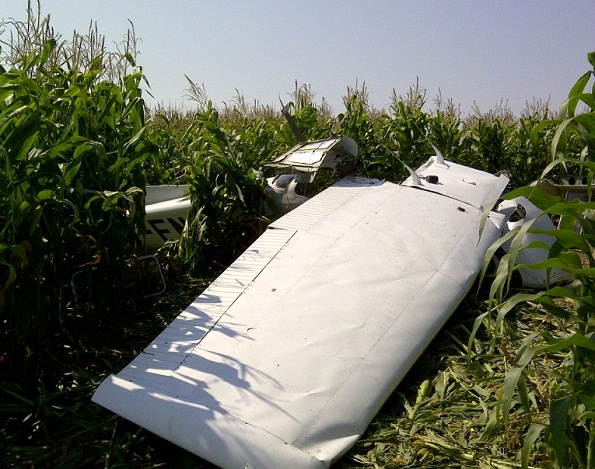Collision with terrain
Waterloo Wellington Flying Club
Cessna 172S, C-FNET
Moorefield, Ontario
The occurrence
On Friday, 24 August 2012, a Cessna 172 (C-FNET) was performing a return flight from Waterloo to Niagara Falls, Ontario, following visual flight rules. When the aircraft failed to return, a seach was initiated. There were several reports of an emergency locator transmitter (ELT) signal being emitted, and the aircraft was found in a corn field near Sideroad 3 in Moorefield, Ontario. The four occupants of the aircraft were fatally injured.
The Transportation Safety Board (TSB) deployed two investigators to the site of the accident and is presently gathering information to assess the occurrence. Read the investigation process page for information on how the TSB conducts its investigations.
News release
Aircraft spin caused the 2012 Cessna crash in Moorefield, Ontario
Read the news release
Investigation information
Download high-resolution photos from the TSB Flickr page.
Class of investigation
This is a class 3 investigation. These investigations analyze a small number of safety issues, and may result in recommendations. Class 3 investigations are generally completed within 450 days. For more information, see the Policy on Occurrence Classification.
TSB investigation process
There are 3 phases to a TSB investigation
- Field phase: a team of investigators examines the occurrence site and wreckage, interviews witnesses and collects pertinent information.
- Examination and analysis phase: the TSB reviews pertinent records, tests components of the wreckage in the lab, determines the sequence of events and identifies safety deficiencies. When safety deficiencies are suspected or confirmed, the TSB advises the appropriate authority without waiting until publication of the final report.
- Report phase: a confidential draft report is approved by the Board and sent to persons and corporations who are directly concerned by the report. They then have the opportunity to dispute or correct information they believe to be incorrect. The Board considers all representations before approving the final report, which is subsequently released to the public.
For more information, see our Investigation process page.
The TSB is an independent agency that investigates air, marine, pipeline, and rail transportation occurrences. Its sole aim is the advancement of transportation safety. It is not the function of the Board to assign fault or determine civil or criminal liability.

